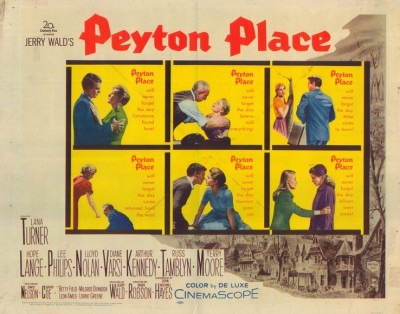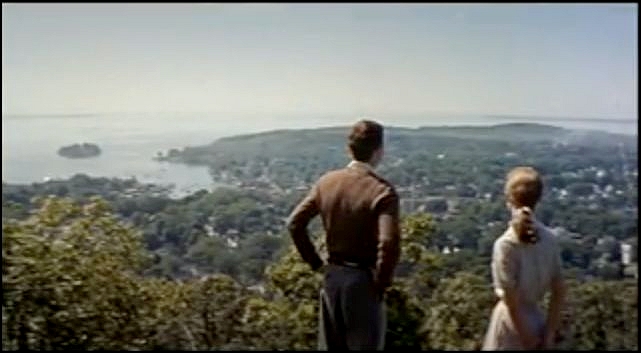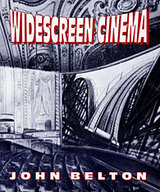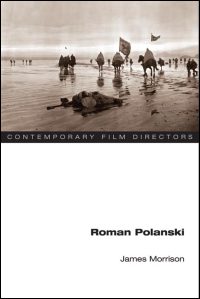The story basically centers on Kevin Thorn aka "The Storymaker" who wants to re-write the universe with his magic pen. To do this, he draws upon the "genres," which are played by characters such as western, blockbuster, comedy, noir, and science-fiction. The Fables team, with the help of "The Literals," try to stop Thorn before he re-writes them out of existence! This was a fun and engrossing read. In fact, if you plan to read Fables, I suggest starting at the beginning. Another gem from Vertigo comics.
About Me

- Tom Connelly
- Thank you for visiting my blog. I’m a scholar of television, film, and digital media, and the author of CINEMA OF CONFINEMENT (Northwestern University Press) and CAPTURING DIGITAL MEDIA (Bloomsbury Academic). I’ve published a variety of articles on film and television in journals published by Taylor & Francis. I am also a writer of fiction. All of my books can be viewed on www.tomconnellyfiction.com
Saturday, January 19, 2013
Fables - The Great Crossover
The story basically centers on Kevin Thorn aka "The Storymaker" who wants to re-write the universe with his magic pen. To do this, he draws upon the "genres," which are played by characters such as western, blockbuster, comedy, noir, and science-fiction. The Fables team, with the help of "The Literals," try to stop Thorn before he re-writes them out of existence! This was a fun and engrossing read. In fact, if you plan to read Fables, I suggest starting at the beginning. Another gem from Vertigo comics.
Random Review - January 19, 2013 - Peyton Place
Peyton Place (1957)
Dir. Mark Robertson
For fans of the television show Twin Peaks (1990-1991), Peyton Place is important to film to view. David Lynch has acknowledged its influence on the show. There are many similarities between both the television show and the film: the main source of employment is a mill; many of the characters are high school teenagers; the postcard images of a small town and the values of its community. But most importantly is the dramatic tension in concealing secrets. Of course, Twin Peaks was marketed as a murder mystery: who killed Laura Palmer? In Peyton Place, there is a desire to know each others' secrets, which generates most of the narrative tension. The patrons of Peyton Place constantly watch each other, causing one another to be conscious of their own looking.
Peyton Place is also know for its powerful use of Cinemascope photography. There are many breathtaking shots of New England that I am sure play better on the big screen. Cinemascope and Cinerama were new technologies created in response to the popularity of television and the changing leisure habits in the USA.
But it would be wrong to suggest that the widescreen images of Peyton Place are there just for purely spectacle means. These gorgeous shot must be considered in relation to the space the characters inhibit. The small town of Peyton Place is where sexuality and intimacy are taboo. These secret places, by way of contrast, are where the young characters can escape to in order to be intimate and to express their feeling...one of many things to enjoy about Peyton Place.
Saturday, December 15, 2012
Top Films 2012
My list of the top films I've seen this year. There is no particular ranking. Some of these films are new releases and some are old. Also, it would take me weeks to give all of these films the special attention they deserve.
A significant experimental documentary about the process of filmmaking. Worthy of noting is Greaves' creative use of split screen processing. I hope more people discover this film.
One of the first films I watched in film school was Un Chien Andalou (1929) and I remember being shocked by its experimentation. The ending of Simon of the Desert is surreal, outrageous, and absolutely brilliant. The chamber drama of The Exterminating Angel had me laughing. At the same time, I kept thinking - he shot a masterpiece that takes place in a music room!
Wes Anderson continues to make interesting coming of age drama/comedies.
This is clearly up there with the great films of the Bond franchise. Javier Bardem's long take entrance and monologue about rats was absolutely brilliant. Great action film that actually raises some interesting points about transparency, surveillance, and terrorism in the digital age.
Made by one Italy's best filmmakers. Long, slow, beautiful, and ethereal. The wedding sequence at the end is unbelievable.
From Here to Eternity (1953)
One of the best performances of the year. Black should be nominated for an Academy award. I love the structure of the film - reminded me of Bob Fosse's Lenny (1974).
Long and excellent film made by one of the greats of the classical period. With all of the sex scandals in politics, this film is even more important today. Betty White has a small role.
Hilarious and smart movie. Great dialogue. I particularly loved the gangster's conversation about Schopenhauer, Nietzsche and Bertand Russell early in the film - very funny.
Symbiopsychotaxiplasm (1968)
William Greaves
A significant experimental documentary about the process of filmmaking. Worthy of noting is Greaves' creative use of split screen processing. I hope more people discover this film.
Fish Tank (2009)
Andrea Arnold
A British film about Mia (Katie Jarvis) a 15-year-old lonely and isolated teenager who has a talent for dancing and becomes attracted to her mother's boyfriend, Connor (Michael Fassbinder). This is a gritty and emotional drama. It is interesting to compare this film with Silver Linings Playbook...
Silver Linings Playbook (2012)
David O. Russel
I love David O. Russell's work. This is a mash up of genres and a lot fun. Reminded me of the madcap films of the 1930s. Great acting - especially De Niro's performance.
Moonrise Kingdom (2012)
Wes Anderson
Wes Anderson continues to make interesting coming of age drama/comedies.
Skyfall (2012)
Sam Mendes
This is clearly up there with the great films of the Bond franchise. Javier Bardem's long take entrance and monologue about rats was absolutely brilliant. Great action film that actually raises some interesting points about transparency, surveillance, and terrorism in the digital age.
Room 237 (2012)
Rodney Ascher
A highly engrossing documentary about the various interpretations of Stanley Kubrick's The Shining. This documentary demonstrates how time-shifting technologies are impacting spectatorship, allowing viewers to closely exam the moving-image.
The Leopard (1963)
Luchino Visconti
Made by one Italy's best filmmakers. Long, slow, beautiful, and ethereal. The wedding sequence at the end is unbelievable.
From Here to Eternity (1953)
Fred Zinnemann
Bernie (2012)
Richard Linklater
One of the best performances of the year. Black should be nominated for an Academy award. I love the structure of the film - reminded me of Bob Fosse's Lenny (1974).
Death of a Cyclist (1955)
Juan Antonio Bardem
49th Parallel (1941)
Michael Powell
Amreerka (2009)
Cherien Dabis
Great melodrama about a Palaestian mother and her son who move to Illinois. At times a bit sappy, but I really liked this film.
Advise and Consent (1962)
Otto Preminger
The Guard (2011)
John Michael
The Girl With The Dragon Tattoo (2011)
David Fincher
David Fincher continues to make great movies. The chemistry between Daniel Craig and Rooney Mara works very well. I love how the film combines digital technologies and physical materials such as documents and photos to solve the mystery.
Wednesday, December 12, 2012
Random Review - December 12, 2012 - Unfaithfully Yours
Unfaithfully Yours (1948)
Writen and Directed by Preston Sturges
CAST: Rex Harrison as Sir Alfred De Carter; Linda Darnell as Daphne De Carter; Rudy Vallee as August Henshler; Barbara Lawrence as Barbara Henshler; Kurt Kreuger as Anthony Windborn; Lionel Stander as Hugo Standoff; Edgar Kennedy as Detective Sweeney; Alan Bridge as House Detective; Julius Tannen as O'Brien; Torben Meyer as Dr. Schultz.
Unfaithfully Yours
begin with Alfred, a famous orchestra conductor arriving in town from London. At the airport, Alfred meets his wife, Daphne
and her sister, Barbara and her husband, August, and Alfred’s business manager,
Hugo. We find out that August had been
looking after Daphne while Alfred was away. But August actually thought that Alfred wanted her literally followed,
so he hired a detective. This angers Alfred. August gives Alfred the detective's report which he tears to pieces. As the film continues, Alfred
keeps receiving a copy of the detective’s report. Finally, when he meets up with Detective
Sweeny, he rips up the original report so no more copies can be made. But then Sweeney tells Alfred that Daphne had been seen with Tony, suggesting an affair. Later that night, Alfred heads to the concert
hall for this performance.
An object
that plays an important, but subtle role throughout Unfaithfully Yours is the use of
zippers and in relation to Alfred's reluctance to read the detectives
report. During the restaurant scene,
early in the film, Alfred approaches August and asks him for the detective’s
card. The image cuts to an extreme close
up of the wallet as August unzips it and retrieves the card. Of course, Alfred
tears the card into pieces. But what is
striking about this moment is that Sturges amplifies the sound of the zipper to
draw our attention to the object, suggesting that there is something
happening in Alfred’s head that neither the spectator nor the characters are
privy to. One possibility is that Alfred has
always been insecure about his marriage to Daphne because of his age.
For example, Alfred states to Daphne before
heading to his concert, (paraphrasing) “Movies fits your culture better.” So when Sweeny tells Alfred that his wife was
with Tony, he assumes the worse, which leads to his visions of enacting revenge
on them. It is at this point in the film
Sturges “unzips” Alfred’s head so we can see his mind's eye - the three fantasy sequences.
But for Daphne and the other characters, they
are “zipped up” and, of course, not accessed to Alfred's visions. They can only hear the music, oblivious on why
Alfred acts so peculiar at the concert.
In between the numbers, Hugo approaches Alfred backstage praising his
conducting. Hugo ironically states to Alfred, “What
vision do you have in your head?” It is only at the end, when the letter
finally arrives at its destination, that Alfred learns that Daphne did not
commit adultery. All the work Alfred
put into ripping up the detectives story, Alfred finally gets the truth of
the letter, which zips the story shut.
Monday, December 10, 2012
Top Non-Fiction Books 2012
Below is my top list of non-fiction books I read this year. No particular ranking.
Wood's sociological and cultural studies account of the straightedge music scene greatly contributes to the field of subculture. Wood's central argument is that when members become disenchanted with the values of their subculture, sub-groups form out what he refers to as "schisms." Straightedge was a result of a schism in the punk rock and hardcore scenes of the early 1980s. This is a great companion piece to Dick Hebdige's Subculture: The Meaning of Style.
Virilio's central claim is that the development of film technologies are intimately linked to warfare technologies and strategies of war. One of Virilio's best books on speed and technology.
I became interested in Hayles' work in a course I took at Claremont Graduate University on Visual Research Methodologies. Hayles' book explores the question of embodiment, materiality and virtuality in the age of high technologies. A complex read, yet totally rewarding. I learned a lot about cybernetics.
Postman argues that forms of television have significantly impacted the production of knowledge in everyday life. He attacks television that takes itself seriously, especially when it involves politics. Highly polemic, this is an essential read for those studying television. I kept thinking about this book during the Presidential debates this year.
Straightedge Youth: Complexity and Contradictions of a Subculture
by Robert T. Wood
Wood's sociological and cultural studies account of the straightedge music scene greatly contributes to the field of subculture. Wood's central argument is that when members become disenchanted with the values of their subculture, sub-groups form out what he refers to as "schisms." Straightedge was a result of a schism in the punk rock and hardcore scenes of the early 1980s. This is a great companion piece to Dick Hebdige's Subculture: The Meaning of Style.
War and Cinema
by Paul Virilio
How We Became Posthuman: Virtual Bodies in Cybernetics, Literature and Informatics
by N. Katherine Hayles
I became interested in Hayles' work in a course I took at Claremont Graduate University on Visual Research Methodologies. Hayles' book explores the question of embodiment, materiality and virtuality in the age of high technologies. A complex read, yet totally rewarding. I learned a lot about cybernetics.
Cinema and Experience: Siegfried Kracauer, Walter Benjamin, and Theodor W. Adorno
by Miriam Hansen
Superbly written book on the writings of Kracauer, Benjamin, and Adorno, three great writers of film and culture of the twentieth century. I particularly enjoyed reading about the various stages of Benjamin's canonical essay, "Art in the Age of Mechanical Reproduction."
Optical Media
by Friedrich Kittler
Unapologetic as a technological determinist, Kittler traces Renaissance art to computational machines. The key points is that the emergence of optical media now allows us to store, transmit and process information. This is a great read and very accessible.
Widescreen Cinema
by John Belton
Belton considers economic, historical, and technological factors that led to the film industry's conversion to widescreen in the 1950s. To compete with television, the film industry marketed widescreen and bigger and better sound as if you were going to an amusement park.
Amusing Ourselves to Death: Public Discourse in
the Age of Show Business
by Neil Postman
Roman Polanski
by James Morrison
Excellently written by my colleague and friend. I had the great pleasure of taking film classes taught by Jim. This is a fabulous book on Roman Polanski. Highlight is the chapter on Rosemary's Baby and the occult.
Saturday, December 8, 2012
Top Fiction Books 2012
My top list of fictional books I read this year. No particular ranking. Other lists will soon follow. I thought of the music show Later...with Jools Holland when putting my lists together, looking at literature and film from a variety of genres and time periods.
The Mayor of Casterbridge
by Thomas Hardy
The story of Michael Henchard begins with him getting drunk at a fair and then selling his wife. Remorseful of his actions, he gives up the drink and eventually becomes the mayor of Casterbridge. When I read the back cover of this book, my first though was that this book has to be read. A great melodrama. One scene worthy noting is when the townspeople skimmity ride through the town to publicly shame Henchard and Lucetta. This part of the story demonstrates that big new scandals and carnivalish ways of gossiping have been around for quite a while. Hardy leaves us wondering whether or not this is a novel of fate. Probably one of the best books I have ever read.
The Shining
by Stephen King
Fahrenheit 451
by Ray Bradbury
The Invisible Man
by H.G. Wells
One of the great all-time science-fiction novels about Griffin (the invisible man) who takes residence in a small village to conduct his research. Griffin eventually turns to robbing the villagers in order to generate money for his rent. Once the villagers discover that Griffin is invisible, a mob is formed and they attempt to capture him. I kept thinking about Michel Foucault's work on the panopticon as I read this. In many ways, Griffin intensifies the villagers' sense of looking and self-scrutiny in a sort of surveillance fashion. When it comes to surveillance, Foucault argues that it is not that someone is actually watching you that makes the panopticon effective. It is the fact that you don't know if someone is watching you and what internalizes the gaze. I believe Griffin has this effect on the villagers.
Freedom
by Jonathan Frazen
Franzen covers a lot of ground in this long tale of the Berglunds family. Franzen takes his time, providing the reader a detailed account of each character. The description and dialogue are excellent here. The storytelling is non-linear, suggesting the disconnection of the Berglunds. I particularly love the character Richard, a disenchanted punk rocker who has a sort of strange relationship with Walter Berglund. Though not as great as The Corrections, this was a long, yet rewarding read. Franzen is one of our best contemporary writers.
by Richard Yates
Yates' gritty and melodramatic novel about of the Davenport couple. For more, see my random review.
The Dead
James Joyce
Joyce's beautifully written novella at the turn of the twentieth century. See my random review on John Huston's film adaptation.
Mother Night
by Kurt Vonnegut
Vonnegut's novel tells the story of Howard W. Campbell Jr, an American Nazi playwright living in New York city. See my random review about the film adaption.
From Hell
by Alan Moore and Eddie Campbell
Saturday, November 3, 2012
Random Reviews - November 3, 2012 - Young Hearts Crying and Watchmen
Young Hearts Crying, Richard Yates, 1984
This was a book recommended to me by my wife who has read all of Yates' work. Yates is known widely for his book Revolution Road, made recently into a film directed by Sam Mendes. This is a powerful and gritty book about the marriage and divorce of Michael and Lucy Davenport. It spans almost forty years, beginning with Lucy and Michael's meeting at Harvard and their marriage in the 1940s, ending somewhere in the late 1970s. The novel's twist is that Lucy comes from money and has inherited 3 million dollars. But Michael refuses to live the life of a wealthy couple, and decides they should live by everyday means. This is because Michael is an aspiring poet and believes that wealth will distract his passion and imagination as a writer. This is a brilliant move on the part of Yates, because it directly taps into the novel's emotional realism about creativity and the struggle of the everyday, something one would likely find in the works of Charles Bukowski.
Young Hearts Crying has similarities to the emotional experience of watching a John Cassavetes film. Yates' minimalist and Hemingway-ish dialogue is pungent and hits you right in the gut, so to speak. The dialogue also indicates the novel's passage of time. For example, you can hear Michael's dialogue changing as he becomes older. I also could not help noticing how many moments in the novel are reminiscent of the character Pete Campbell from the show Mad Men. One wonders how much inspiration Matthew Weiner may have gotten from Yates's work?
Michael and Lucy have their own separate stories after their divorce, as they each try to pick up the pieces and carry on with their lives. Part of their struggles stem from the desire to create, whether its Michael hyper-focusing over one line of dialogue in his poem, or Lucy seeking approval for her paintings from her neighbor and artist Nelson. Like the book itself, its about tapping into those deep emotions and trying to find the right word or image to convey expressions of loneliness, melancholy or frustration.
Watchmen, 2009, Zack Snyder
Watchmen has had a long history in Hollywood. It was acquired by Hollywood in the late 1980s, and a number of directors have been attached to the project, including Terry Gilliam. I even purchased a copy of the screenplay in the late 1990s from a nascent eBay. When I finally heard the film was actually in production, and then saw a trailer in 2008, I was quite eager to see how director Zack Snyder (Dawn of the Dead, 300, Sucker Punch) would adapt what many have called the "Citizen Kane" of comic books to the screen.
Snyder compacts twelve chapters of Watchmen into roughly a three hour film. The set design and art direction of the film are magnificent. The film's use of colors and light, in many ways, reminded me of Kubrick's A Clockwork Orange. I would even go as far as to add that the film has a sort of surrealistic quality. I also love how Snyder incorporates popular music as part of the score. Rorschach, played by Jackie Earle Haley, is fantastic and has a Taxi Driver/Travis Bickle-like quality. As a side note, I highly recommend reading Rorschach's back story in Before The Watchmen, written by Brian Azzarello, writer of 100 Bullets.
Many reviews for Watchmen have not been enthusiastic. Yet, I believe that as time passes, Watchmen will be considered a significant film in the cannon of the comic book film genre. Putting that aside, Watchmen, as a graphic novel, is arguably an important work of literature of the twentieth century. Overall, I think the film is quite entertaining and something of a tour de force for its tone, art, and set design.
Subscribe to:
Comments (Atom)
Watched and Read - December 7, 2025
Here’s what I watched and read last week… MOVIES Four Rooms (1995) is featured on the Criterion Channel in a collection of films that ta...

-
When I first taught world cinema, I knew I wanted to assign Ingmar Bergman 's The Seventh Seal (1957). But when the time came to put my...
-
The Lacanian gaze is one of the hardest concepts I teach for my Film Theory course . The way we commonly think of the gaze (to look) is not...
-
I often teach Francis Ford Coppola's The Conversation (1974) for my Introduction to Film and Film Theory courses. The Conver...









































